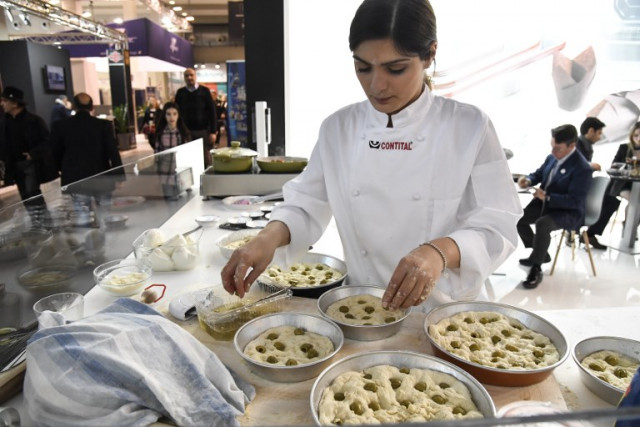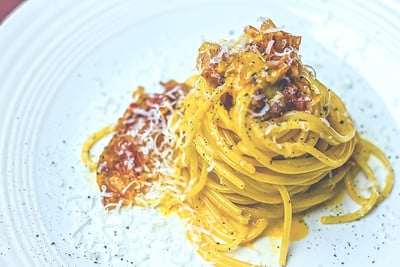Making your own bread is not hard at all: what’s required is time and patience, but the results are worth the wait.
My father used to spend his Sunday mornings kneading dough, an activity that would both relax him and make our mouths water in anticipation. There is nothing better than a house smelling of freshly baked bread, and to steal a bite of a still warm loaf when no one is looking!
READ ALSO: 85 percent of bread sold in Italy is 'fresh and artisanal,' study says

Photo: Andreas Solaro/AFP
This week I propose my recipe for focaccia. I chose to flavour it with rosemary, but other ingredients can be used, according to your preferences: Kalamata olives, onions or sun-dried tomatoes are delicious additions. Or just make it plain: this focaccia is sure to become a family favourite!
Ingredients for 4 portions
For the dough:
350 g very strong white bread flour
200 ml lukewarm water
3 tbsp of extra virgin olive oil
7 g fast action dried yeast
A few sprigs of fresh rosemary
1 tsp of salt
To garnish:
5-6 tbsp of extra virgin olive oil
1 tsp of coarse sea salt
Method
1. In a large bowl mix the flour with the yeast and the salt, then add the water and the oil. Mix well until all the water has been absorbed.
2. Take the dough on a flat working surface, and knead vigorously for at least 15 minutes (the longer it’s kneaded, the better the result). The dough has to be elastic and easy to work, but not too soft. If it’s too dry and hard, add a little water (lightly wetting the hands should be enough). If it’s too soft and it sticks to the fingers, sprinkle it with a little flour, and work it until it reaches the right consistency.
3. Coat the dough in a little olive oil, put it back in the bowl, cover it with a clean towel, and let it rest for one hour in a warm place (ideally in a cold oven with its light on).
4. Take the rosemary and hold the sprig from the top. With the other hand, slide the fingers with a decisive downward movement to remove the needles. Chop them roughly and set aside.
5. When the dough has doubled its volume, take it out of the bowl and on a lightly floured flat surface, and punch it down. Add the rosemary and knead for a few minutes until the rosemary has been incorporated evenly. Coat the dough in a little olive oil, put it back in the bowl and cover it. Let it rest for another 30 minutes.
6. Preheat the oven to 200°C/gas mark 6. Carefully oil an oven tray of about 40cm by 20cm. Take the dough and gently spread it to fit the tray. Cover with a clean towel and let it rest for about 10 minutes.
7. Pour the olive oil on the top of the flattened dough and spread it so as to cover it evenly. Pressing with the fingertips, create regular deep dimples all over the surface. Sprinkle some coarse salt on top. Put it in the oven and bake it for 30 minutes or until it has become a nice golden colour.
8. Take it out and let it cool down on a rack before serving. It's delicious served with Parma ham and a glass of Tocai Friulano or Sauvignon Vert.

Silvana Lanzetta. Photo: Private
Silvana Lanzetta was born into a family of pasta makers from Naples and spent 17 years as a part-time apprentice in her grandmother’s pasta factory. She specializes in making pasta entirely by hand and runs regular classes and workshops in London.
Find out more at her website, Pastartist.com, including this recipe and others.




 Please whitelist us to continue reading.
Please whitelist us to continue reading.
Member comments